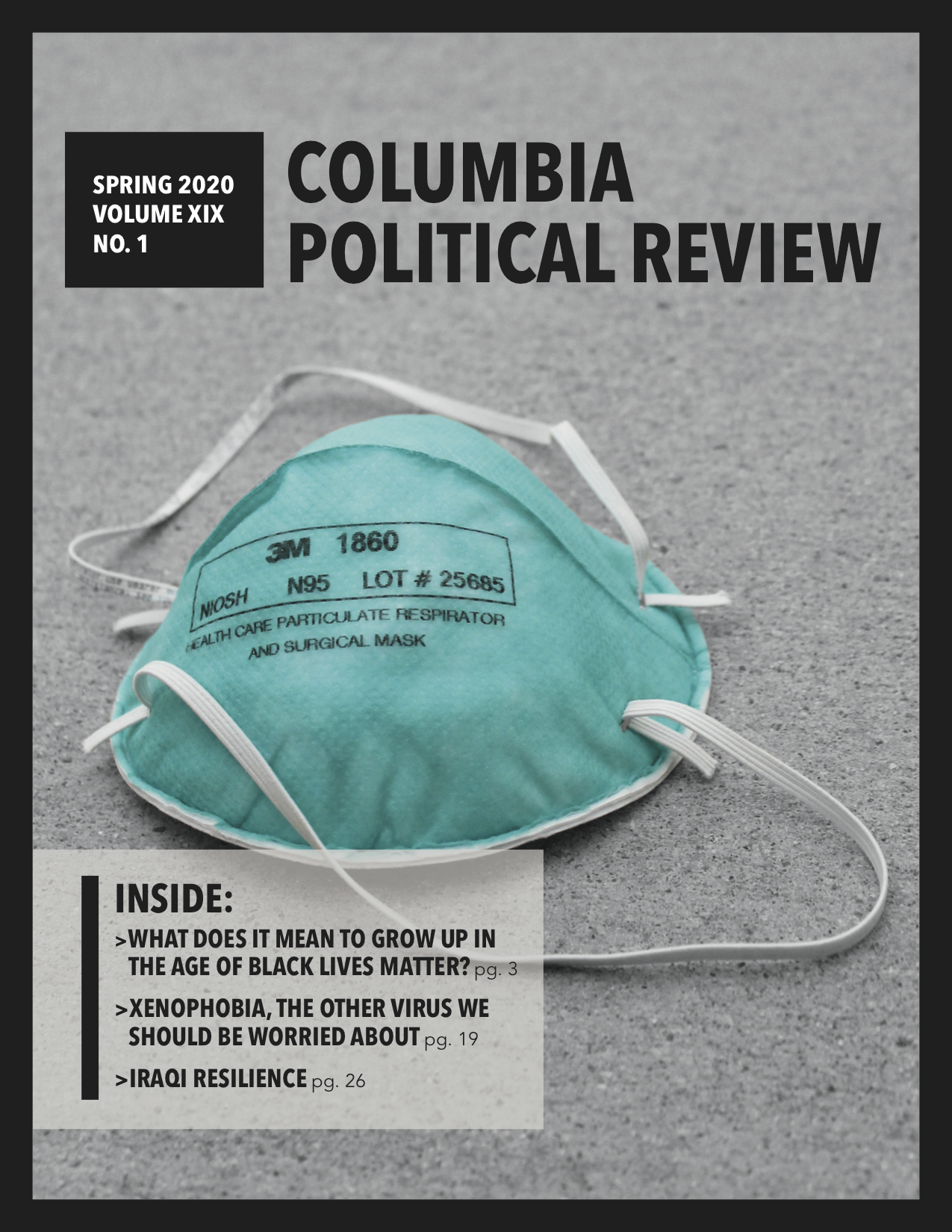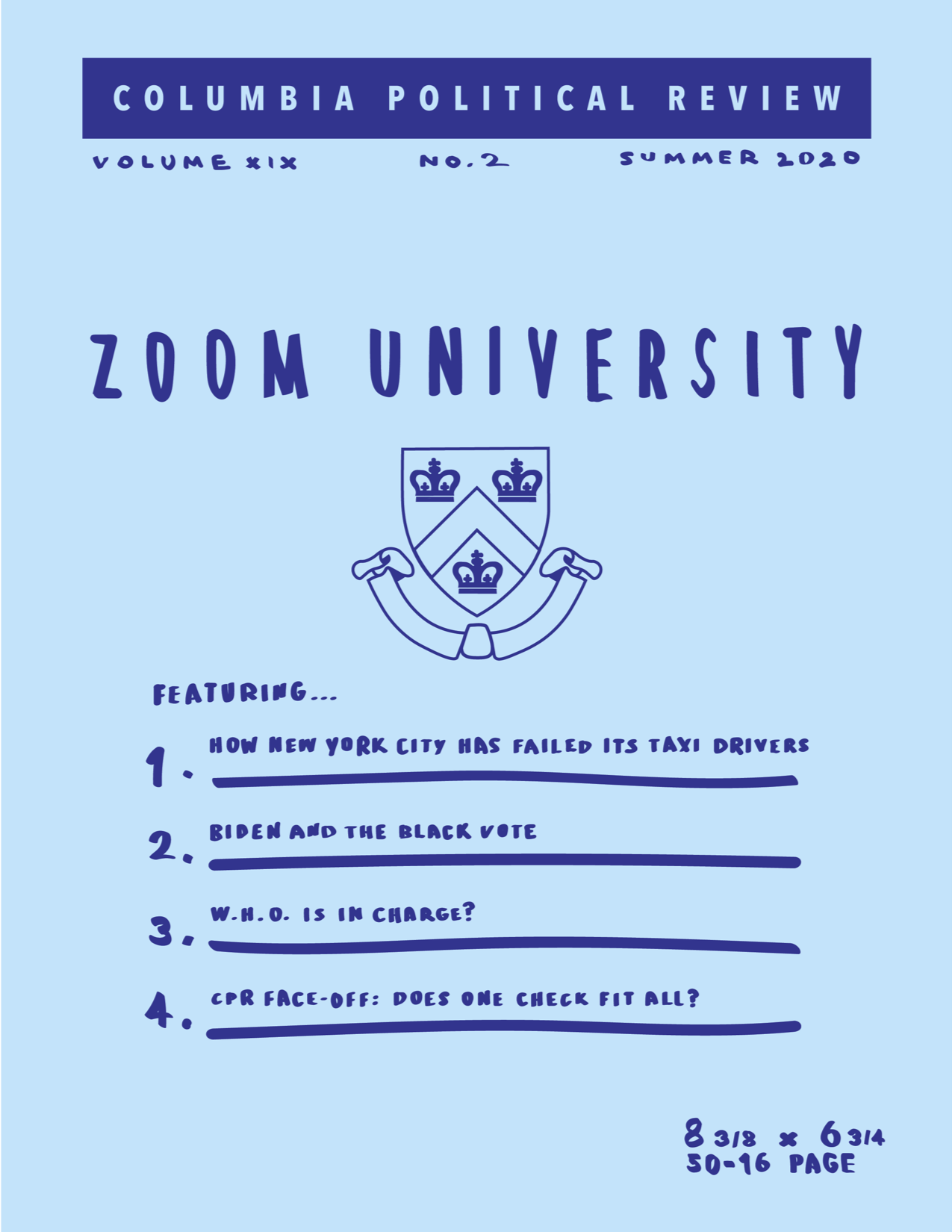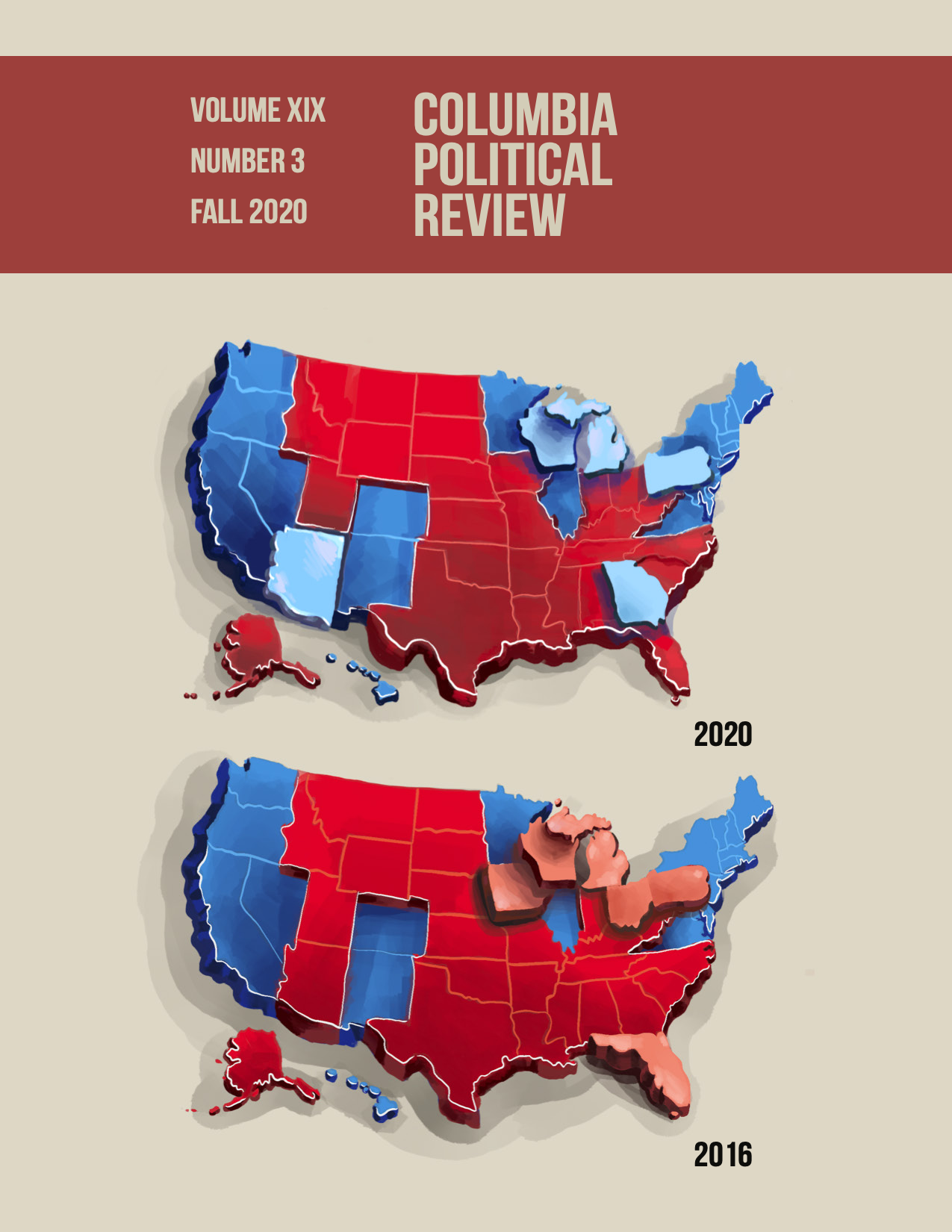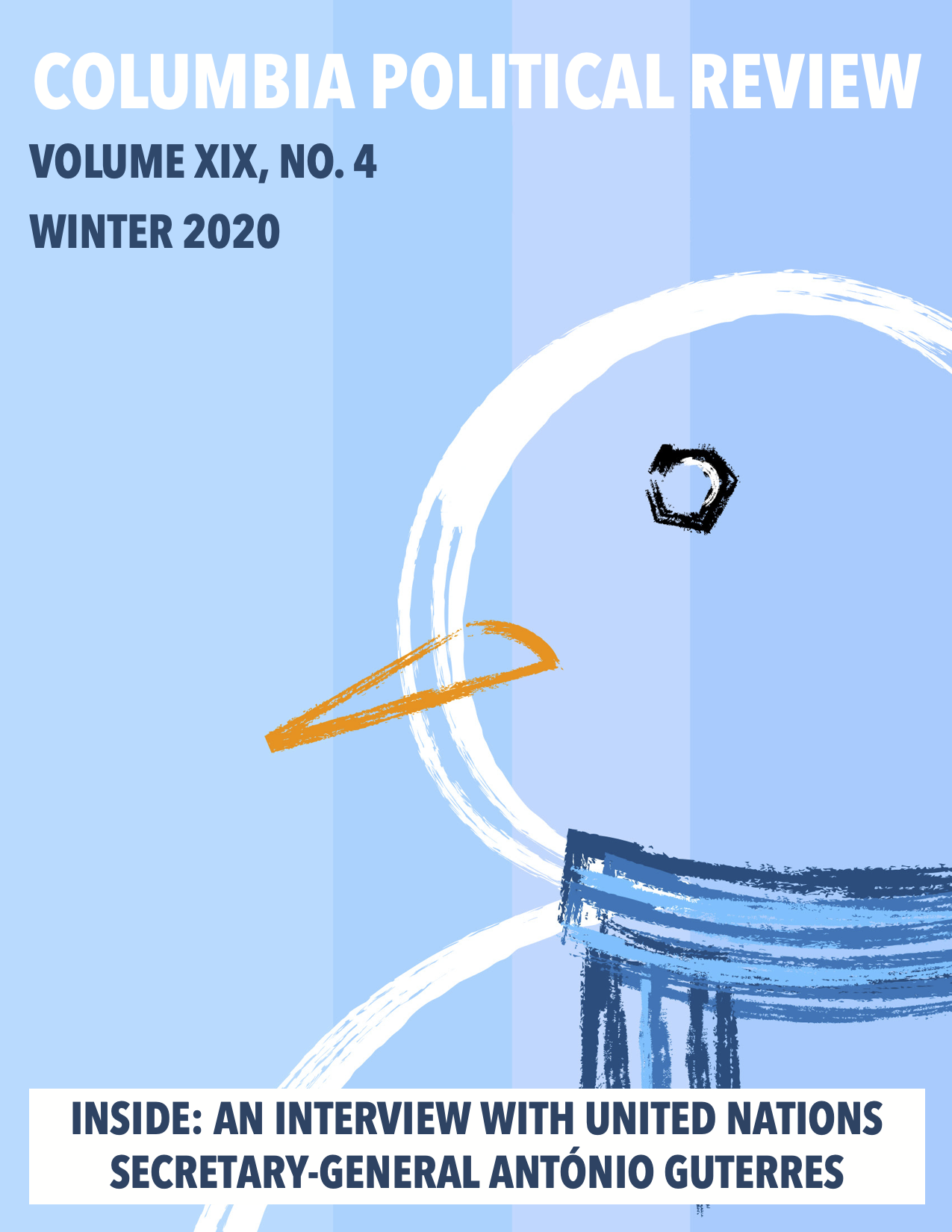CPR's 2020 Year in Review
Congratulations on completing the semester, and thanks as always for your hard work. As I was at the end of the spring, I'm pleased to be able to share lots of positive news from our data and analytics, as well as some other observations.
I'm hoping that end-of-year reports will eventually become an Editor-in-Chief precedent, to help with both accountability and team-building. If you ever go into organizing work (or really any management position), always remember to "tally and celebrate," to borrow a campaign term. A public version of it will also be available here on the website, for record-keeping; our archiving projects this semester indicate we could leave a more thorough paper trail.
As you read, staff members, I also encourage you to go back and tally your own version of these benchmarks; it will help you craft more persuasive résumé lines. If you're an editor, for example, you should go back and count the number of pieces you helped bring to life—and celebrate that!
Article Production
This year, we published 116 articles, an increase of about 50 (or about 80%) from the prior year, spanning:
six continents (still waiting on that Antarctica piece!)
twenty-four different countries of particular focus
fifteen American states and territories of particular focus
six articles on New York in particular
six articles on campus issues
twenty-one pitches from the external community (new this year), including
two from SIPA students (a first as far as I know)
four from undergraduate students who are not Columbia affiliates (a first)
one from a CPR alumnus (a first as far as I know)
one from a current faculty member (for the first time in a couple years)
one from a former adjunct lecturer at Barnard
one from a Teachers College alumnus (a first)
two from writers who would later join staff
two new face-off-style pieces
six full-length interviews, with:
the Secretary-General of the United Nations
prominent Hong Kong democracy activist Joshua Wong
leading ACLU lawyer Julie Ebenstein
congressional candidate Suraj Patel
economics professor Waseem Noor
and youth climate activist Delaney Reynolds
(Not to mention all of the excellent interviews many of you incorporated into broader pieces)
Below is a graphed-out breakdown of this year's article production so that future years can optimally strategize. As you can see, we averaged about 9 articles a month, but with large variance. Lulls happened around midterms, finals, and the initial COVID-19 disruption (as you might expect), but the deepest ones happen at the beginning of the semesters, due primarily to recruitment as well as the nature of a fresh start. Pitches might make that smoother sailing, but I'll leave that to the future generation.
Traffic
This is one of the parts I'm most excited about. Our increase in traffic outpaced our increase in article production by a significant margin (150% versus 80%). All of our traffic has more than doubled year-on-year, and has increased since the spring, too. As of December 25, we have had:
39,641 website visits, a 151% increase over last year
34,773 unique visitors, a 158% increase over last year
72,629 page views, a 147% increase over last year
That's huge, and it's all thanks to your hard work writing even better articles, volunteering to edit pitches, sharing out on social media, and recruiting your friends to join the magazine.
I'm most excited about the right-hand part of this graph, which shows us slowly but steadily breaking the benchmark of 1,000 weekly views.
[If you're curious, the large spike in May originated from the two back-and-forth pieces we published on the BDS referendum. Lots of traffic, but the virality was also matched by virulence, which compromises a key element of CPR’s mission to be a comfortable space for students to explore their writing, so there are trade-offs.]
Some other things I noticed while under the hood: Facebook is still our most effective means of getting people to view our articles. Thanks to Eleanor Yeo's recent efforts, though, we've been experiencing a sharp rise in Instagram-sourced traffic, too, which is good. As you all know, Instagram slides are very effective at spreading.
Also, Twitter has a surprisingly high conversion rate—if you have a substantial personal following, you will receive a lot of views if you share your article. For example, we had a small spike this semester when CPR alumna Bari Weiss tweeted out one of her old CPR pieces, and another spike happened when Aditya was retweeted by the General Studies account for his interview with the Sec-Gen.
LinkedIn might also be a good vehicle, but that's your personal choice (also, follow and connect with us there!).
Finally, we're also coming up in Google searches much more these days. I’m not precisely sure why, but it’s a good thing regardless.
Print Magazines
Thanks to the hard work of our new layout and graphics teams, we have significantly changed the look of this year's magazines compared to recent years, both on the outside and especially on the inside. A big thank-you to our layout leaders Helen and Olivia and our artists Peyton Ayers, Julia Ulziisaikhan, and Christina Su for their bold vision and dedication in bringing these to light despite the tumultuous world around us. They've gotten at least 1,300 views online, and some copies may decorate campus soon, which is where their bigger circulation has traditionally been. I've also seen professors share them on Facebook.
And Beyond
This year, we made a number of important long-term changes. On the staff side, we more than doubled staffing opportunities, increasing them by about 160% to number over 100. We also built fledgling layout and graphics teams that I hope will grow and become more formalized once the world returns to normal.
We revised our production structure, giving managing editors a group of writers and editors to focus on and widening the opportunities for copy editors by broadening the position into "junior editor." This breaks nineteen years of precedent, but I am glad we did it; copy editors have traditionally felt excluded from most of the process, and frankly, there wasn’t much to gain from having the position.
Many thanks to our Managing Editors—Sophia Houdaigui, Rachel Barkin, Ramsay Eyre, and Olivia Choi—for their hard work this year, which enabled Maria and me to expand the staff as significantly as we did.
We also added a Publicity Editor and a Chief of Staff, positions which I'm excited to see continue to develop. We also revised our meeting structure, which was disrupted by COVID, but I'm interested to see how future editorial boards will strike that balance for maximum efficiency and enjoyability.
We have revised our style guidelines and centralized all information about production on a new, publicly-available writing guide. Lots of contributions from Olivia Choi and Ramsay Eyre on that, thank you both.
Daniel Kang and Oliver Niu launched the CPR Podcast and have done a wonderful job at being self-starters there, without much pushing from Maria or myself. The process continues to develop: even recently, Oliver devised a better method of sharing the podcast via a transcript on the website combined with the embedded Spotify link. They hope to build out and optimize their production system in the coming semester, and I'm excited to see it grow. If the website has space, my successor might consider giving the podcast a dedicated page.
Finally, our high school essay contest received a record-high 51 submissions, and in another first, we've had one of the prior years' honorable mentions come to Columbia and join our staff! We also took the step of publishing the winning submission as its own article on our website for the first time, which is more appropriate given the quality of the submissions we have received over the past few years. Perhaps future honorable mentions should be published as well.
Room for Improvement
I would of course be remiss not to mention things we need to improve on. Most of them have to do with staff development and making sure that our staff is as connected as possible to each other among the CPR community, especially given how hard it is to network informally these days during the pandemic. The semester got away from us before we could introduce our small topic-based discussion meetings, though Olivia did put one on that went well. I was also hoping to get to know more of you better, but scheduling and setting up small-group coffee chats slipped by us, too.
After February, Maria and I also didn't get to bump into you and randomly spot-check to make sure your editors are providing everything you need or that your writers are being responsive. This is actually a very helpful tool for us, and we struggled replacing it with email check-ins. I know there were some trouble spots, but hopefully things worked out decently overall.
Some other things: We missed out on our goal to receive more pitches from representatives of student groups, and could possibly benefit from expanding our coverage of campus issues (there are some remarkable pieces from the mid-2010s and prior on things like Manhattanville, for example). Similarly, we can always benefit from publishing even more of those narrowly-focused pieces about interesting niche or local political phenomena; they frequently stand out better in Google and social media feeds. Traffic will also grow exponentially if we continue to publish more people outside the Columbia undergraduate community, though there is a trade-off there and we should not compromise on the dedication currently brought to our core Columbia/Barnard undergraduate focus.
We also need to reconnect better with relevant departments and institutes and research centers on campus. Mention off-handedly that you contribute to CPR in your office hour meetings with professors—they used to be more involved with us; everyone I've spoken to is favorable about interacting more with CPR, it's just a matter of actually undertaking the connection and getting them following and sharing the magazine again. Those strong relationships fell by the wayside for a period of a few years in 2017-2019, and it'd be nice to rebuild them. Maybe we'll even have some sort of faculty advising system someday.
Finally, Maria and I have taken the first few steps in the long process of reconnecting CPR with its alumni community, but there's more work to be done next year. Our alums have worked at the New York Times, The Atlantic, the White House, the Washington Post, the New Republic, EMILY's List, community organizing, ABC News, Blackstone, McKinsey, state and county government, think tanks all over the political spectrum, and more. Next year is CPR's 20th anniversary, so it'll be a big year for the magazine, and I'm sure Olivia will help us connect to the prior two decades. For now, you can see all the past Editorial Boards on our website, under the masthead, and you can find the print archive under "Print Issues" as well.
A Note of Thanks
I am of course indebted to the hard work and grace brought to the Publisher position by Maria Castillo this year. The same goes to this year's Managing Editors and Chief of Staff, several of whom will be leading the magazine next year. Maria, Sophia, Ramsay, Olivia, Sarah, and Rachel, you all gave this magazine more time and effort than was asked of your predecessors (I should know, I was one), and I'm very grateful that you have gone out on a limb for each of my off-the-wall ideas and helped to bring them to life. You have also brought your own innovations to this magazine, many of which have impacted the future of this publication significantly. You were instrumental during recruitment, and you created our new branding, our renovated print magazine, much of our new writing guide, and staff trainings.
I am also fortunate to have benefited from consultation and experience with members of prior editorial boards, including three of my predecessors as Editor-in-Chief. I also want to thank Helen Sayegh and Peyton Ayers again for their work enduring and putting together our print magazines during a pandemic which might have otherwise relegated those important documents to obsolescence. Helen has been putting together our layout for years, and I am immensely grateful to her both for sticking around for this last year and for being eager to work with Olivia and me on giving the magazine a face-lift. I am also grateful to Peyton, whom I called back up after she had retired from CPR graphics a year prior, for accommodating me, for being willing to return for one final year, and for doing a great job with our art.
There are about 100 more of you to whom I owe thanks, but I'll be happy to convey those individually whenever I next see you. For now, I'll also shout out Henry Feldman and Jake Tibbetts, graduating seniors who have been with the magazine as long as I have—through its ups and downs. I appreciate their sticking around for this last adventure. I will also share my gratitude for Katherine Malus, Janine Nassar, and Raya Tarawneh, longtime staff members who joined the executive board of our parent organization CIRCA with me in various capacities. You have helped me not only to endure those endless board meetings but also have contributed a number of ideas that have shaped the way we operate.
I end most of my notes with a reference to the promising futures you all have, and I do actually mean it. At the end of the day, CPR is really just an incubator. It was created in 2001 by students who wanted a place for political opinion writing that could be longer than a Spectator op-ed. I hope that the large, diverse community and healthy collaboration we have here—a precious commodity these days—will leave a mark on you, and that you will repay that by replicating that experience for others wherever you go—whether it be to City Hall, the newsroom, Washington, the courtroom, or somewhere beyond.
All the best, and good luck,
Alex
Alex Siegal is the outgoing Editor-in-Chief of CPR and a senior at Columbia College studying Economics-Political Science.












